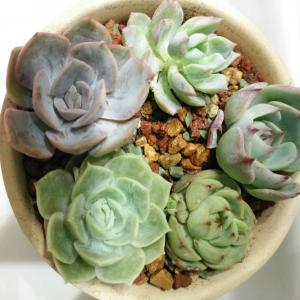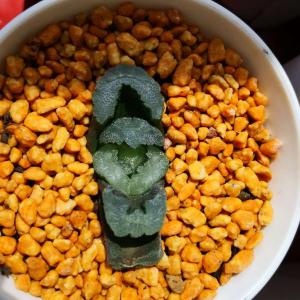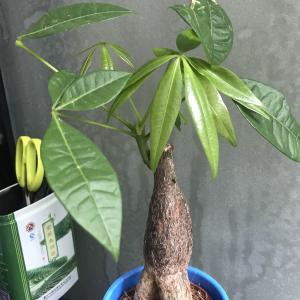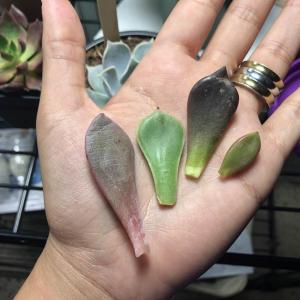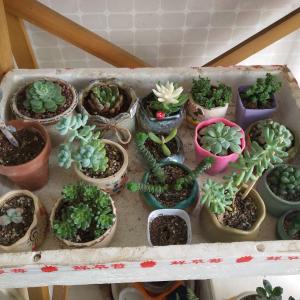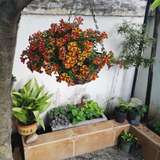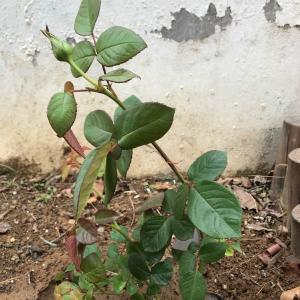文章
Miss Chen
2018年05月02日

Close-up of FlowerDescription: This herbaceous perennial plant is 4-12" tall, consisting of a short stem that branches at ground level into 2 basal leaves with long petioles. The basal leaves are up to 3" long and 4" across. They are cordate-orbicular, deeply indented at the base, and have smooth margins. Their upper surface is slightly hairy and shiny. From the axil of a pair of leaves, develops a single reddish brown flower on a short stalk. Both the flowering stalk and the petioles of the leaves are covered with white hairs that are long and twisted. The flower is about 1" across; it has 3 calyx lobes that are triangular in shape and curl backward. The thick tubular base of calyx is divided into 6 rounded chambers (3 primary chambers, which are each divided into 2 secondary chambers). These chambers contain the ovaries, which develop into rows of seeds. The tubular base of the calyx is light reddish brown and covered with long white hairs. There is a stout column of reproductive organs at the throat of the flower, which is reddish brown like the lobes. It is surrounded by the inner surface of the calyx, which is white. The blooming period occurs from mid- to late spring, and lasts about 3 weeks. After the flowers wither away, the seed capsule splits open to release the seeds. These seeds have a fleshy appendage. The root system consists of shallow rhizomes that are fleshy and branching. This plant often forms vegetative colonies.
Cultivation: The preference is light shade and moist to slightly dry conditions. The soil should be rich and loamy, although some rocky material underneath the soil surface is acceptable.
Range & Habitat: The native Wild Ginger is a common plant that can be found in most counties of Illinois (see Distribution Map). Habitats include moist to slightly dry deciduous woodlands (both floodplain and upland), and bluffs. It often found along ravines and slopes.
Faunal Associations: The reddish brown flowers probably attract flies or beetles as pollinating agents. The seeds attract ants because of their fleshy appendages; these insects help to disperse the seeds. The toxic foliage is not eaten by mammalian herbivores.

Photographic Location: The edge of a wooded bluff at Kickapoo State Park in Vermilion County, Illinois, where this plant is quite common. The foliage in the upper left corner of the photograph of the basal leaves is Dentaria laciniata (Cutleaf Toothwort).
Comments: This plant is called 'Wild Ginger' because the aromatic rhizomes have a ginger-like fragrance and flavor. Fresh or dried, they can be used as a substitute for the spice. Different varieties of Wild Ginger have been described by different authorities, which vary according to the length of the calyx lobes, and whether they are spreading or reflexed. The variety that is described here, Asarum canadense reflexum, is the most common variety of Wild Ginger in Illinois.
Cultivation: The preference is light shade and moist to slightly dry conditions. The soil should be rich and loamy, although some rocky material underneath the soil surface is acceptable.
Range & Habitat: The native Wild Ginger is a common plant that can be found in most counties of Illinois (see Distribution Map). Habitats include moist to slightly dry deciduous woodlands (both floodplain and upland), and bluffs. It often found along ravines and slopes.
Faunal Associations: The reddish brown flowers probably attract flies or beetles as pollinating agents. The seeds attract ants because of their fleshy appendages; these insects help to disperse the seeds. The toxic foliage is not eaten by mammalian herbivores.

Photographic Location: The edge of a wooded bluff at Kickapoo State Park in Vermilion County, Illinois, where this plant is quite common. The foliage in the upper left corner of the photograph of the basal leaves is Dentaria laciniata (Cutleaf Toothwort).
Comments: This plant is called 'Wild Ginger' because the aromatic rhizomes have a ginger-like fragrance and flavor. Fresh or dried, they can be used as a substitute for the spice. Different varieties of Wild Ginger have been described by different authorities, which vary according to the length of the calyx lobes, and whether they are spreading or reflexed. The variety that is described here, Asarum canadense reflexum, is the most common variety of Wild Ginger in Illinois.
0
0
文章
Miss Chen
2018年05月02日

Description: This herbaceous perennial plant is ½–2' tall and unbranched. The central stem is light green, glabrous to pubescent, and slender. Several alternate leaves occur along this stem; the stem has a tendency to zigzag between pairs of succeeding leaves. The leaf blades are 2–5" long and ½–2" across; they are narrowly cordate, ovate-sagittate, or narrowly hastate with a pair of rounded basal lobes. The leaves are indented where the petioles join the blades, and their tips are narrowly acute to acute. Two varieties of this plant have been described: the typical variety (var. serpentaria) has leaves usually exceeding ¾" in wide that are cordate or ovate-sagittate in shape, while a narrow-leaved variety (var. hastata) has leaves less than ¾" across that are narrowly hastate in shape. Both the upper and lower surfaces of the leaf blades are medium green and glabrous. The slender petioles are light green and ¼–1¼" long. One or more solitary flowers are produced from the tips of lateral stems that are found at the base of the plant; these flowers are held slightly above the ground surface, lie directly on the ground surface, or they are buried by fallen leaves. The alternate leaves of these lateral stems have been reduced to bracts that are less than ¼" in length. The flowers are ½–¾" in length; they are shaped somewhat like an old-fashioned tobacco pipe. Each flower has a petaloid calyx that is tubular and curved, 6 stamens, and an inferior ovary with a single style and 3-lobed stigma. The petaloid calyx is somewhat constricted at the throat, while its narrow outer opening is surrounded by 3 blunt lobes that are joined together and spreading. The outer surface of the petaloid calyx varies in color from pale greenish purple to deep reddish brown (maroon) and it is more or less pubescent. In addition to the chasmogamous (insect-pollinated) flowers that have been described, sometimes smaller cleistogamous (self-fertile) flowers are produced. The blooming period occurs during the late spring or summer. Afterwards, fertile flowers are replaced by 6-valved seed capsules that are about ½" across at maturity and more or less globoid in shape. The outer surface of each seed capsule has 6 fine ridges along its outer surface that are equidistant and longitudinal. Eventually, these seed capsules split open to release their seeds (there are about 48 seeds per capsule). These seeds are 4-5 mm. long, compressed-obovoid in shape, and brown. The root system consists of a short knotty rhizome that has abundant fibrous roots below.
Cultivation: The preference is light to medium shade, mesic conditions, and a loamy soil with decaying organic matter (e.g., fallen leaves). As the flowers are not conspicuous, this is primarily a foliage plant for shade gardens or restoration of woodland habitat.
Range & Habitat: The native Virginia Snakeroot is uncommon to occasional in most areas of Illinois, except in the NW section of the state, where it is absent (see Distribution Map). The typical variety of this plant (Aristolochia serpentaria serpentaria) occurs in all of the areas that are indicated, while the narrow-leaved variety (Aristolochia serpentaria hastata) is restricted to the southern tip of Illinois, where it is rare. Illinois lies near the northern range-limit of this plant. Habitats include rich mesic woodlands, upland rocky woodlands, wooded slopes, and wooded ravines. This is a conservative species that is normally found in higher quality woodlands where the original ground flora is intact. It usually occurs in the forest understory as scattered solitary plants, rather than in colonies.
Faunal Associations: The odd-looking flowers are cross-pollinated primarily by flesh flies, fungus gnats, and possibly carrion beetles. After entering the flowers, these insects remain trapped in the calyx tube until the stamens mature, after which they escape carrying some of the pollen on their bodies. The floral reward of these insects is primarily nectar. The caterpillars of a butterfly, the Pipevine Swallowtail (Battus philenor), feed on the foliage of Virginia Snakeroot (Aristolochia serpentaria), although more than one plant is required to complete their development. Because the foliage and roots are toxic and unpleasant-tasting, mammalian herbivores do not feed on this plant. The method of seed dispersal for this plant is something of a mystery, although it has been speculated that small rodents may carry the the seeds to caches, where they are eaten as food. Because such rodents have short life spans, not all of the seeds are eaten (Allard, 2002).

Photographic Location: A woodland in southern Illinois. The photographed plant is an example of the typical variety, or Aristolochia serpentaria serpentaria.
Comments: It is possible to identify Virginia Snakeroot (Aristolochia serpentaria) by the shape of its leaves and its relatively low stature. The flowers of this plant resemble those of Woolly Pipevine (Aristolochia tomentosa) and Dutchman's Pipe (Aristolochia macrophylla), although the flowers of Virginia Snakeroot are smaller in size and they are held much closer to the ground. The latter two plants are much longer vines that are distributed primarily in SE United States, although Woolly Pipevine also occurs as a native plant in the southern tip of Illinois. These two vines are also cultivated occasionally. Some authors have assigned Virginia Snakeroot to the Endodeca genus, although this classification is not universally accepted. For example, Mohlenbrock (2014) refers to the typical variety of this plant as Endodeca serpentaria, while the narrow-leaved variety is referred to as Endodeca hastata. There is also disagreement about whether or not plants with narrow leaves are worthy of status as a variety or a distinct species.
Cultivation: The preference is light to medium shade, mesic conditions, and a loamy soil with decaying organic matter (e.g., fallen leaves). As the flowers are not conspicuous, this is primarily a foliage plant for shade gardens or restoration of woodland habitat.
Range & Habitat: The native Virginia Snakeroot is uncommon to occasional in most areas of Illinois, except in the NW section of the state, where it is absent (see Distribution Map). The typical variety of this plant (Aristolochia serpentaria serpentaria) occurs in all of the areas that are indicated, while the narrow-leaved variety (Aristolochia serpentaria hastata) is restricted to the southern tip of Illinois, where it is rare. Illinois lies near the northern range-limit of this plant. Habitats include rich mesic woodlands, upland rocky woodlands, wooded slopes, and wooded ravines. This is a conservative species that is normally found in higher quality woodlands where the original ground flora is intact. It usually occurs in the forest understory as scattered solitary plants, rather than in colonies.
Faunal Associations: The odd-looking flowers are cross-pollinated primarily by flesh flies, fungus gnats, and possibly carrion beetles. After entering the flowers, these insects remain trapped in the calyx tube until the stamens mature, after which they escape carrying some of the pollen on their bodies. The floral reward of these insects is primarily nectar. The caterpillars of a butterfly, the Pipevine Swallowtail (Battus philenor), feed on the foliage of Virginia Snakeroot (Aristolochia serpentaria), although more than one plant is required to complete their development. Because the foliage and roots are toxic and unpleasant-tasting, mammalian herbivores do not feed on this plant. The method of seed dispersal for this plant is something of a mystery, although it has been speculated that small rodents may carry the the seeds to caches, where they are eaten as food. Because such rodents have short life spans, not all of the seeds are eaten (Allard, 2002).

Photographic Location: A woodland in southern Illinois. The photographed plant is an example of the typical variety, or Aristolochia serpentaria serpentaria.
Comments: It is possible to identify Virginia Snakeroot (Aristolochia serpentaria) by the shape of its leaves and its relatively low stature. The flowers of this plant resemble those of Woolly Pipevine (Aristolochia tomentosa) and Dutchman's Pipe (Aristolochia macrophylla), although the flowers of Virginia Snakeroot are smaller in size and they are held much closer to the ground. The latter two plants are much longer vines that are distributed primarily in SE United States, although Woolly Pipevine also occurs as a native plant in the southern tip of Illinois. These two vines are also cultivated occasionally. Some authors have assigned Virginia Snakeroot to the Endodeca genus, although this classification is not universally accepted. For example, Mohlenbrock (2014) refers to the typical variety of this plant as Endodeca serpentaria, while the narrow-leaved variety is referred to as Endodeca hastata. There is also disagreement about whether or not plants with narrow leaves are worthy of status as a variety or a distinct species.
0
0
文章
Miss Chen
2018年05月02日

Description: This perennial plant is about 1-2' tall. It consists of 1-2 trifoliate leaves with long petioles and a stout peduncle (or stalk) with a single flower at its apex. Both the petioles and the peduncle develop directly from the corm; the peduncle is wrapped by a sheath at its base and it is shorter than the petioles. They both have a smooth hairless surface, and their color varies from light green to reddish green or brownish green. The light green to dark green leaflets are up to 7" long and 3" across; they are ovate or broadly rhombic, pinnately veined, glabrous, and smooth along the margins. The terminal leaflet is larger than the lateral leaflets. Jack-in-the-Pulpit is usually monoecious, but some plants are unisexual and they have the capability to change their gender. The whitish green to reddish green flower is about 3½" long and 2" across, consisting of a spadix and spathe. The light green spadix is cylindrical in shape; the male flowers are located above the female flowers on the lower half of the spadix, where they are hidden from view by the surrounding spathe. These flowers are tiny in size and they lack corollas and calyxes. The male flowers have several stamens, while the female flowers have a single pistil. The spathe loosely surrounds the spadix, exposing only its upper portion (the "Jack" of the flower). The upper part of the spathe develops behind the spadix and then curves over it, providing a protective hood (the "Pulpit" of the flower). This spathe varies from light green to reddish green in color; its tubular base is slightly furrowed and often has white or burgundy stripes.
The blooming period occurs from mid- to late-spring and lasts about 2 weeks, although the spadix and spathe remain attractive for a longer period of time. The flowers may emanate a faint scent that resembles stagnant water or fungi; if so, it is difficult to detect through the human nose. If cross-pollination occurs, each fertilized flower will develop a fleshy red fruit about ¼" across; this fruit contains one or more seeds. Collectively, these fruits can form an ovoid mass up to 2" long. The root system consists of a corm up to 1½" across with secondary roots.
Cultivation: The preference is dappled sunlight to light shade during the spring, when vegetative growth and flowering occurs; medium shade is tolerated later in the year. The soil should be moist to mesic and contain an abundance of organic material from decaying leaves and other material. It is easier to start plants from corms, rather than seeds.

Range & Habitat: The native Jack-in-the-Pulpit is a fairly common plant that occurs in every county of Illinois (see Distribution Map). Habitats include mesic deciduous woodlands and shady hillside seeps. This species typically occurs in original woodlands that have never been subjected to the plow or bulldozers.
Faunal Associations: The flowers are pollinated by fungus gnats (Sciaridae & Mycetophilidae) and the larvae of parasitic thrips. In particular, the oligolectic thrips Heterothrips arisaemae and probably Ctenothrips bridwelli are attracted to the flowers of Jack-in-the-Pulpit. The foliage and corms (especially the latter) contain crystals of calcium oxalate, which can cause a burning sensation in the mouth and irritation of the gastrointestinal tract. As a result, mammalian herbivores rarely eat this plant. However, some upland gamebirds feed on the foliage occasionally, including Meleagris gallopavo (Wild Turkey). The red berries are eaten by some woodland birds, including Hylocichla mustelina (Wood Thrush) and the Wild Turkey.

Photographic Location: The photographs were taken at Busey Woods in Urbana, Illinois, and at a woodlands near Kickapoo State Park in Vermilion County, Illinois.
Comments: Jack-in-the-Pulpit is a favorite woodland wildflower because of its curious flowers. The closest relative of this species is Arisaema dracontium (Green Dragon). Green Dragon also occurs in moist to mesic woodlands, but it is less common in Illinois. Each flower of Green Dragon has a long narrow spadix that protrudes above the spathe; the latter is narrowly cylindrical. The foliage of these two species differs as well: Jack-in-the-Pulpit has compound leaves with 3 leaflets, while Green Dragon has compound leaves with 5-13 leaflets. The leaflets of the latter are more narrow than those of Jack-in-the-Pulpit. In southern Illinois, there is a rare subspecies of Jack-in-the-Pulpit, Arisaema triphyllum pusillum, that is a dwarf version of the typical subspecies.
The blooming period occurs from mid- to late-spring and lasts about 2 weeks, although the spadix and spathe remain attractive for a longer period of time. The flowers may emanate a faint scent that resembles stagnant water or fungi; if so, it is difficult to detect through the human nose. If cross-pollination occurs, each fertilized flower will develop a fleshy red fruit about ¼" across; this fruit contains one or more seeds. Collectively, these fruits can form an ovoid mass up to 2" long. The root system consists of a corm up to 1½" across with secondary roots.
Cultivation: The preference is dappled sunlight to light shade during the spring, when vegetative growth and flowering occurs; medium shade is tolerated later in the year. The soil should be moist to mesic and contain an abundance of organic material from decaying leaves and other material. It is easier to start plants from corms, rather than seeds.

Range & Habitat: The native Jack-in-the-Pulpit is a fairly common plant that occurs in every county of Illinois (see Distribution Map). Habitats include mesic deciduous woodlands and shady hillside seeps. This species typically occurs in original woodlands that have never been subjected to the plow or bulldozers.
Faunal Associations: The flowers are pollinated by fungus gnats (Sciaridae & Mycetophilidae) and the larvae of parasitic thrips. In particular, the oligolectic thrips Heterothrips arisaemae and probably Ctenothrips bridwelli are attracted to the flowers of Jack-in-the-Pulpit. The foliage and corms (especially the latter) contain crystals of calcium oxalate, which can cause a burning sensation in the mouth and irritation of the gastrointestinal tract. As a result, mammalian herbivores rarely eat this plant. However, some upland gamebirds feed on the foliage occasionally, including Meleagris gallopavo (Wild Turkey). The red berries are eaten by some woodland birds, including Hylocichla mustelina (Wood Thrush) and the Wild Turkey.

Photographic Location: The photographs were taken at Busey Woods in Urbana, Illinois, and at a woodlands near Kickapoo State Park in Vermilion County, Illinois.
Comments: Jack-in-the-Pulpit is a favorite woodland wildflower because of its curious flowers. The closest relative of this species is Arisaema dracontium (Green Dragon). Green Dragon also occurs in moist to mesic woodlands, but it is less common in Illinois. Each flower of Green Dragon has a long narrow spadix that protrudes above the spathe; the latter is narrowly cylindrical. The foliage of these two species differs as well: Jack-in-the-Pulpit has compound leaves with 3 leaflets, while Green Dragon has compound leaves with 5-13 leaflets. The leaflets of the latter are more narrow than those of Jack-in-the-Pulpit. In southern Illinois, there is a rare subspecies of Jack-in-the-Pulpit, Arisaema triphyllum pusillum, that is a dwarf version of the typical subspecies.
0
0
文章
Miss Chen
2018年05月02日

Close-up of InflorescenceDescription: This herbaceous perennial plant is 1½–2½' tall. It consists of a single basal leaf and single flowering stalk. The basal leaf has a long stout petiole that is up to 2' long and erect. This petiole is pale green, glabrous, and glaucous. The basal leaf is up to 2½' long and 2' across; it divides into 5-13 leaflets that are parallel with the ground. Each leaflet is up to 8" long and 2½" across, narrowly ovate, smooth along the margins, glabrous, and dark green. The 2 terminal leaflets may be deeply cleft into 2 or 3 lobes that resemble smaller leaflets. The naked flowering stalk is about ½–1' tall (not including the flower); it is whitish green, unbranched, erect, and hairless. At the apex of this stalk is a single flower that consists of a spathe and spadix. The spathe is about 2" long, pale green, glabrous, and glaucous. This spathe wraps around the base of the spadix, but it is partially open and pointed at the top. The spadix is about 6-12" long. The lower portion of the spadix is about 2" long and nearly surrounded by the spathe; it is cylindrical in shape and bears the male and/or female flowers. Most plants are monoecious with separate male and female flowers, but sometimes they are unisexual. The male flowers occur above the female flowers; they are both rather small and inconspicuous. The upper portion of the spadix is about 4-10" long and tapers gradually to a point. It is usually whitish green and remains more or less erect. The blooming period occurs during late spring and early summer and the flowers remain attractive for about a month. They may release a fungus-like scent that is not detectable by the human nose. Each flower is replaced by an ovoid mass of berries, which become orange-red by the end of the summer. The root system consists of a corm with secondary roots. This plant can spread by forming offsets or by reseeding itself.
Cultivation: The preference is dappled sunlight during the spring and light shade during the summer. The soil should be moist and loamy with a layer of decaying leaves. This plant adapts to shady areas underneath trees and doesn't like to dry out. It has few problems with disease and insect pests.
Range & Habitat: The native Green Dragon occurs occasionally throughout most of Illinois, although it is uncommon or absent in the NW area of the state (see Distribution Map). Habitats include moist deciduous woodlands, shady seeps, and wooded areas adjacent to springs and vernal pools. The presence of this species is an indication that the original woodland flora is still intact. Green Dragon often occurs in the same habitats as the closely related Arisaema triphyllum (Jack-in-the-Pulpit), but the latter species is the more common of the two.
Faunal Associations: The flowers of Green Dragon attract simple flies (Nematocera), particularly fungus gnats. A thrip species, Ctenothrips bridwelli, has been observed feeding on Green Dragon in Illinois. The berries are eaten by the Wild Turkey, Wood Thrush, and possibly other woodland birds. Mammalian herbivores, including White-Tailed Deer, rarely feed on the foliage and corms as they are highly toxic. The toxic agent is calcium oxalate, which causes a burning sensation in the mouth, gastrointestinal distress, and possible damage to the kidneys.

Photographic Location: Near a vernal pool at Busey Woods in Urbana, Illinois.
Comments: Green Dragon is an attractive foliage plant for shady places and the unusual flowers are interesting as well. This species resembles Arisaema triphyllum (Jack-in-the-Pulpit) somewhat, but the latter has only 3 leaflets per compound leaf. There are also differences in the structure of their flowers: the spadix of Green Dragon is much longer and strongly exerted from the spathe, while the spathe of Jack-in-the-Pulpit forms a hood over the spadix.
Cultivation: The preference is dappled sunlight during the spring and light shade during the summer. The soil should be moist and loamy with a layer of decaying leaves. This plant adapts to shady areas underneath trees and doesn't like to dry out. It has few problems with disease and insect pests.
Range & Habitat: The native Green Dragon occurs occasionally throughout most of Illinois, although it is uncommon or absent in the NW area of the state (see Distribution Map). Habitats include moist deciduous woodlands, shady seeps, and wooded areas adjacent to springs and vernal pools. The presence of this species is an indication that the original woodland flora is still intact. Green Dragon often occurs in the same habitats as the closely related Arisaema triphyllum (Jack-in-the-Pulpit), but the latter species is the more common of the two.
Faunal Associations: The flowers of Green Dragon attract simple flies (Nematocera), particularly fungus gnats. A thrip species, Ctenothrips bridwelli, has been observed feeding on Green Dragon in Illinois. The berries are eaten by the Wild Turkey, Wood Thrush, and possibly other woodland birds. Mammalian herbivores, including White-Tailed Deer, rarely feed on the foliage and corms as they are highly toxic. The toxic agent is calcium oxalate, which causes a burning sensation in the mouth, gastrointestinal distress, and possible damage to the kidneys.

Photographic Location: Near a vernal pool at Busey Woods in Urbana, Illinois.
Comments: Green Dragon is an attractive foliage plant for shady places and the unusual flowers are interesting as well. This species resembles Arisaema triphyllum (Jack-in-the-Pulpit) somewhat, but the latter has only 3 leaflets per compound leaf. There are also differences in the structure of their flowers: the spadix of Green Dragon is much longer and strongly exerted from the spathe, while the spathe of Jack-in-the-Pulpit forms a hood over the spadix.
0
0
文章
Miss Chen
2018年05月02日

Description: This perennial wildflower is about 1½' tall and 2' across. A single compound leaf and the inflorescence develop from a short stalk that is less than 1" long. The slender petiole of this leaf is about 1–1¼' long and erect; it is light green to dark red and glabrous. The blade of the compound leaf is divided into 3 segments; each of these segments is pinnately compound, consisting of 3-7 leaflets. The leaflets are up to 5" long and 2" across; they are ovate to obovate, medium green, hairless, and finely serrated along their margins. The inflorescence consists of a branching stalk of several umbels (usually 3); this inflorescence is about ¾' tall and hidden from above by the leaflets. Each globoid umbel spans about 1½–2" across, consisting of about 40 small flowers and their pedicels. The pedicels are pale green and glabrous or pubescent. Each greenish white flower is about 1/8" (3 mm.) across, consisting of 5 petals, 5 stamens, a pistil with 5 styles, and insignificant sepals. When the flower opens, the petals become strongly recurved. The strongly exerted stamens have white filaments and white anthers. The styles are very short and appressed together in the center of the flower. The ovoid-oblongoid ovary is shiny green.
The blooming period occurs during late spring to early summer and lasts about 2-3 weeks. The flowers are replaced by small blue-black berries; each fleshy berry is about ¼" across and contains 5 seeds. The root system consists of a vertical rootstock with fibrous secondary roots; long horizontal rhizomes are produced occasionally, from which clonal plants develop.
Cultivation: The preference is light shade, mesic conditions, and loamy, rocky, or sandy soil containing some loose organic matter.
Range & Habitat: The native Wild Sarsaparilla is occasional in northern Illinois, uncommon in west-central Illinois, and absent from the rest of the state (see Distribution Map). Habitats include rich woodlands, rocky woodlands, sandy woodlands, swamps, and forested bogs. This species adapts to a variety of wooded habitats.

Faunal Associations: Unfortunately, information is lacking about flower-visiting insects. The caterpillars of Papaipema araliae (Aralia Shoot Borer Moth) bore through the stems. The berries of Aralia spp. are eaten by some woodland songbirds, including the White-Throated Sparrow, Swainson's Thrush, and Wood Thrush. The berries of Aralia spp. are also eaten by some mammals, including the Red Fox, Eastern Skunk, and Eastern Chipmunk.
Photographic Location: A rocky woodland at The Potholes in west-central Indiana.
Comments: At one time, the roots of Wild Sarsaparilla were used as a substitute for genuine Sarsaparilla to flavor root beer, hence the common name of this woodland wildflower. Wild Sarsaparilla is related to the better known Panax quinquefolius (American Ginseng). This latter species differs from Wild Sarsaparilla by its palmate leaflets and red berries. Other Aralia spp. in Illinois are, in most cases, woody shrubs or trees. An exception is Aralia racemosa (American Spikenard), which is a much larger plant with more leaflets (9-21) per leaf segment.
The blooming period occurs during late spring to early summer and lasts about 2-3 weeks. The flowers are replaced by small blue-black berries; each fleshy berry is about ¼" across and contains 5 seeds. The root system consists of a vertical rootstock with fibrous secondary roots; long horizontal rhizomes are produced occasionally, from which clonal plants develop.
Cultivation: The preference is light shade, mesic conditions, and loamy, rocky, or sandy soil containing some loose organic matter.
Range & Habitat: The native Wild Sarsaparilla is occasional in northern Illinois, uncommon in west-central Illinois, and absent from the rest of the state (see Distribution Map). Habitats include rich woodlands, rocky woodlands, sandy woodlands, swamps, and forested bogs. This species adapts to a variety of wooded habitats.

Faunal Associations: Unfortunately, information is lacking about flower-visiting insects. The caterpillars of Papaipema araliae (Aralia Shoot Borer Moth) bore through the stems. The berries of Aralia spp. are eaten by some woodland songbirds, including the White-Throated Sparrow, Swainson's Thrush, and Wood Thrush. The berries of Aralia spp. are also eaten by some mammals, including the Red Fox, Eastern Skunk, and Eastern Chipmunk.
Photographic Location: A rocky woodland at The Potholes in west-central Indiana.
Comments: At one time, the roots of Wild Sarsaparilla were used as a substitute for genuine Sarsaparilla to flavor root beer, hence the common name of this woodland wildflower. Wild Sarsaparilla is related to the better known Panax quinquefolius (American Ginseng). This latter species differs from Wild Sarsaparilla by its palmate leaflets and red berries. Other Aralia spp. in Illinois are, in most cases, woody shrubs or trees. An exception is Aralia racemosa (American Spikenard), which is a much larger plant with more leaflets (9-21) per leaf segment.
0
0
文章
Miss Chen
2018年05月01日

Description: This herbaceous perennial wildflower is about 2-4' tall; in open areas, it usually branches and has a bushy appearance. The stems are light green, terete, glabrous, and glaucous. The alternate leaves are up to 6" long and 2½" across; they are ovate to narrowly ovate, smooth along the margins, and usually hairless. The upper surface of each leaf is bright green, and glabrous, while the lower surface is pale green. Rarely, the lower surfaces of the leaves are pubescent. Each leaf has a slender petiole up to 1" long. The upper stems terminate in compact panicles of flowers.
Each flower spans ½–¾" across, consisting of a tubular corolla with 5 widely spreading lobes and a very short calyx with 5 triangular teeth. The corolla is mostly pale blue and its lobes are narrow and star-like. Near the base of each lobe, there is a small patch of white or pale yellow. The narrow throat of each corolla is guarded by a ring of white hairs that face inward (probably to keep out ants & other nectar thieves). The branches of the panicle are green and hairless, becoming dark brown or black with age. The blooming period occurs from mid-spring to early summer and lasts about a month. There is no noticeable floral scent. Each fertilized flower is replaced by a pair of cylindrical follicles that are about 4-5" long. The follicles are glabrous and erect to ascending. Each follicle contains a a single row of small cylindrical seeds; it splits along one side to release them. The root system consists of a taproot. This wildflower spreads by reseeding itself.

Cultivation: The preference is full sun to light shade and moist conditions. Different soil types are tolerated, including those that contain clay-loam, rocky material, or sand. The foliage is rarely disfigured by herbivores or disease. More flowers are produced if there is some exposure to the sun.
Range & Habitat: The native Bluestar is occasional in southern and western Illinois; it is absent elsewhere (see Distribution Map). Habitats include rocky woodlands, shaded rocky ravines, gravelly seeps, borders of streams, limestone glades, and moist sandy meadows. Because of its attractive foliage and flowers, Bluestar is occasionally cultivated in gardens, from which it can escape. This is the only native Amsonia sp. in Illinois; other species in this genus are native to areas south of Illinois.

Faunal Associations: The nectar of the flowers attracts the Ruby-throated Hummingbird and various long-tongued insects. These insect visitors include the Large Carpenter Bee (Xylocopa virginica), Hummingbird moths (Hemaris spp.), and various butterflies. An aphid, Macchiatiella rhamni, uses Bluestar as a summer host (Hottes & Frison, 1931). Because the foliage contains a white latex that is toxic, it is avoided by mammalian herbivores.
Photographic Location: A wet prairie at Meadowbrook Park in Urbana, Illinois.

Comments: The star-like flowers are a heavenly shade of light blue and the foliage is an attractive bright green. No other native plant in Illinois resembles this species. The closest relatives of Bluestar in Illinois are Apocynum cannabinum (Common Dogbane) and Apocynum androsaemifolium (Spreading Dogbane). These latter two species have white to pinkish white flowers that are bell-shaped and smaller in size. While Bluestar has alternate leaves, Common Dogbane and Spreading Dogbane have opposite leaves. Sometimes other Amsonia spp. (Bluestars) are occasionally cultivated in gardens. They differ from the Bluestar that is described here by the shapes of their flowers and leaves. Another common name of Amsonia tabernaemontana is Blue Dogbane.
Each flower spans ½–¾" across, consisting of a tubular corolla with 5 widely spreading lobes and a very short calyx with 5 triangular teeth. The corolla is mostly pale blue and its lobes are narrow and star-like. Near the base of each lobe, there is a small patch of white or pale yellow. The narrow throat of each corolla is guarded by a ring of white hairs that face inward (probably to keep out ants & other nectar thieves). The branches of the panicle are green and hairless, becoming dark brown or black with age. The blooming period occurs from mid-spring to early summer and lasts about a month. There is no noticeable floral scent. Each fertilized flower is replaced by a pair of cylindrical follicles that are about 4-5" long. The follicles are glabrous and erect to ascending. Each follicle contains a a single row of small cylindrical seeds; it splits along one side to release them. The root system consists of a taproot. This wildflower spreads by reseeding itself.

Cultivation: The preference is full sun to light shade and moist conditions. Different soil types are tolerated, including those that contain clay-loam, rocky material, or sand. The foliage is rarely disfigured by herbivores or disease. More flowers are produced if there is some exposure to the sun.
Range & Habitat: The native Bluestar is occasional in southern and western Illinois; it is absent elsewhere (see Distribution Map). Habitats include rocky woodlands, shaded rocky ravines, gravelly seeps, borders of streams, limestone glades, and moist sandy meadows. Because of its attractive foliage and flowers, Bluestar is occasionally cultivated in gardens, from which it can escape. This is the only native Amsonia sp. in Illinois; other species in this genus are native to areas south of Illinois.

Faunal Associations: The nectar of the flowers attracts the Ruby-throated Hummingbird and various long-tongued insects. These insect visitors include the Large Carpenter Bee (Xylocopa virginica), Hummingbird moths (Hemaris spp.), and various butterflies. An aphid, Macchiatiella rhamni, uses Bluestar as a summer host (Hottes & Frison, 1931). Because the foliage contains a white latex that is toxic, it is avoided by mammalian herbivores.
Photographic Location: A wet prairie at Meadowbrook Park in Urbana, Illinois.

Comments: The star-like flowers are a heavenly shade of light blue and the foliage is an attractive bright green. No other native plant in Illinois resembles this species. The closest relatives of Bluestar in Illinois are Apocynum cannabinum (Common Dogbane) and Apocynum androsaemifolium (Spreading Dogbane). These latter two species have white to pinkish white flowers that are bell-shaped and smaller in size. While Bluestar has alternate leaves, Common Dogbane and Spreading Dogbane have opposite leaves. Sometimes other Amsonia spp. (Bluestars) are occasionally cultivated in gardens. They differ from the Bluestar that is described here by the shapes of their flowers and leaves. Another common name of Amsonia tabernaemontana is Blue Dogbane.
0
0





